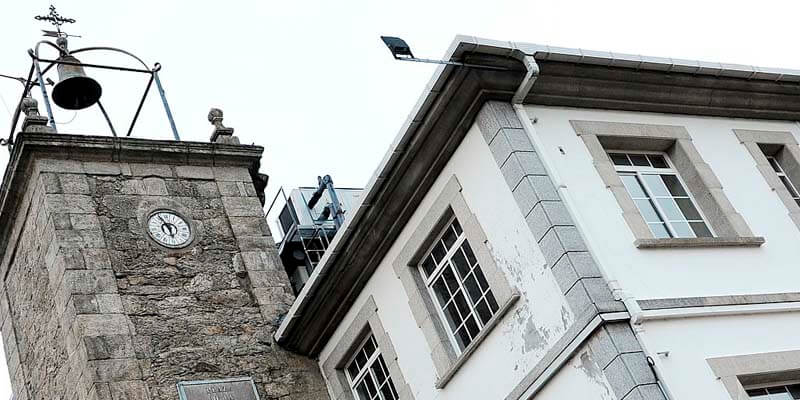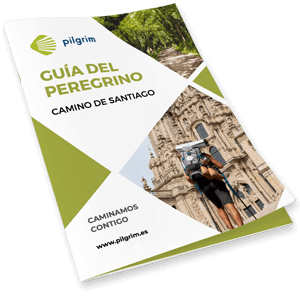Neda
‹ Back to the stage
Neda
- Residents: 5.261 aprox.
- Province: A Coruña
Information
Get to know Neda
The municipality of Neda stands out for the quality of the water of the river Belelle, providing this town with a famous bread and products made with the same.
The spectacular fervenza and the environment of Monte de Ancos give visitors the opportunity to enjoy unbeatable views of the entire estuary. In addition, through the cobbled Royal Street we can visit the church of San Nicolas and the Clock Tower, from the medieval period.
Location
How to get there
The easiest way to get to Neda is by the AP-9 freeway, which communicates with A Coruña and Vigo. It also has accesses by roads N-651, AC-115 and AC-862.
The town has a train stop, the main line communicates the town with A Coruña and Ortigueira. There are also many bus lines that stop in the village and thanks to this it is communicated with municipalities such as; Ferrol, Naron, Fene, Valdoviño, Cedeira, A Coruña, Santiago and Ortigueira.
History / Culture
What to see
Restos del antiguo Hospital del Espíritu Santo
This former pilgrims’ hospital was built in the 16th century to help pilgrims on their way to Santiago de Compostela or San Andrés de Teixido. Nowadays, only the clock tower from 1786, a commemorative inscription and the cross remain from the original building, since the town hall was built on its foundations.

Pazo Isabel II
This beautiful pazo with a spectacular garden is privately owned, slowly deteriorating due to its current abandonment. It was formerly a textile factory for the sails of ships, which worked using the water of the river Belelle to move its wheels.
It consisted of three buildings where the family and the service lived, plus a dovecote, a granary and several beautifully decorated fountains and statues.

Pazo de la Merced
This spectacular pazo dates from the eighteenth century and is located on the banks of the estuary. There is a legend that says that it was connected by a passageway to the monastery of San Martiño de Xubia, at the opposite end of the estuary and where the monks crossed every night.
<p
Iglesia de Santa María
This temple dedicated to Santa Maria is representative of the Galician rural baroque. It dates from 1762, although its construction began in 1720 on the remains of a previous temple that is believed to date back to the tenth century.

Iglesia de San Nicolás
This impressive church was built in the mid-fourteenth century, appearing for the first time in official documentation in 1397. Although the window of the side wall is reminiscent of a Romanesque construction, by the date we can deduce that it would really be a late Gothic style, although the facade is baroque due to some later remodeling of the eighteenth and nineteenth centuries.

Iglesia de los Remedios de Anca
Temple of recent construction, specifically began work in 1908, prevailing the neo-Gothic style. It has only one nave with a Latin cross plan with the choir at the foot. The facade is divided into three sections and the tower, similar to that of the church of San Nicolas, is located on the left street.

Fuentes de Canteira
These beautiful fountains made with local stonework date from the nineteenth and twentieth centuries. They are located in the vicinity of the churches and in the main streets of the place. They were an obligatory stop for pilgrims on their way to Santiago de Compostela or San Andrés de Teixido.

Fervenza de Belelle
This spectacular waterfall is located in the place of O Roxal. It is one of the most impressive of all the Galician community, enjoying a height of up to 45 meters and forming a small natural pools where you can cool off and enjoy nature. The flow of the river is maintained throughout the year, increasing considerably in autumn and winter, perfect time to visit.
Near the fervenza there is a hydroelectric power station built at the beginning of the century to provide electricity to the city of Ferrol.
Near the fervenza there is a hydroelectric power station built at the beginning of the century to provide electricity to the city of Ferrol.

Fábrica de Xubia
This factory began its activity around 1790. It began by building copper plates for warships, in line with the industry of the surrounding area. Later it became a weapons factory, then a coin factory and finally a textile factory. Today it is still standing and operating under the ownership of Galicia Textil.

Torre del reloj
Today the Clock Tower is part of the town hall. It was formerly attached to the pilgrims’ hospital and the chapel of the Holy Spirit.
The chapel was built in 1500 although there is no evidence of it until 1832. A century later, in 1934, it was demolished to build the current town hall.

Escudos heráldicos de piedra
These coats of arms are scattered in different parts of the municipality. The most prominent are exposed on the stairs of the town hall as they were discovered during the works carried out in the old pilgrims’ hospital attached to the town hall. The rest are scattered mostly in the arcades of the Calle Real. These coats of arms are usually dated between the seventeenth and eighteenth centuries.
<p
Cruceiro de Santa María
This cruceiro is located in the atrium of the church of Santa María de Neda. Made by José Castro, it stands out for both the cross and its pedestal, made of serpentine.
It is also known by the name of Moeche stone, because its builder was a famous stonemason of that area.
It is also known by the name of Moeche stone, because its builder was a famous stonemason of that area.

Cruceiro de San Nicolás
This famous transept stands out for having a Gothic cross with the image of Christ on both sides and four figures on the foot, something very rare in this type of monument.

Castro de Ancos
This incredible oval castro is 116 meters wide and 90 meters long. It still retains remnants of the wall that surrounded it, this being the only element of defense with which it counted. Located in a strategic position on top of the Ancos mountain, it enjoyed spectacular views of the entire estuary, making it very easy to protect.

Capilla de San Antonio
This beautiful chapel, characteristic of the popular baroque style, dates from the 18th century, and there is a license signed by S. Francisco Daoz Vilamaren e Saavedra in 1701 that helps to date this building. It is composed of a single nave with a vaulted vault and underwent a recent restoration. In the entrance door there is a niche with the image of San Antonio renovated, thanks to the donation of a neighbor.

Capilla de la Merced
This small 18th century chapel was built at the same time as the neighboring tannery of Florida. It has a rectangular floor plan with a door and linteled windows. It emphasizes the belfry with a single central opening and its construction in ashlar, observing in its walls several ornamental motifs. This chapel is attached to the pazo of the same name, which currently serves as a rural house and in which many ceremonies are held, both religious and civil and festive.

Antiguos Molinos de Belelle
Neda is famous for the quality of the waters of the Belelle, being the maximum exponent its numerous mills, remaining in operation four of them. Some of them can be visited, following a route that allows to know the process of the elaboration of bread.

Information of interest
Local police
639 151 417
Civil guard
981 340 094
Fire department
112
Civil protection
629 224 622
Town hall
981 380 039
Health center
981 380 297
Tourism office
981 390 249 / 981 390 233
Avenida de Algeciras, 61

We send you your itinerary
Enter your details and receive your travel itinerary by email
Recommended
Gastronomy
Recommended
Festivals and Pilgrimages
Local festivity
Junio: Corpus Christi
Local festivity
10 de septiembre: Fiesta de Santa María
Local festivity
A mediados de junio: Fiesta del vino Xuviño
Local festivity
Primer domingo de septiembre: Fiesta del pan
Local festivity
Mayo y junio: Fuegos de San Ramón









